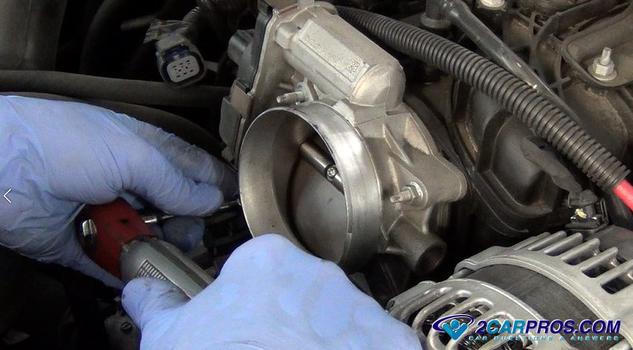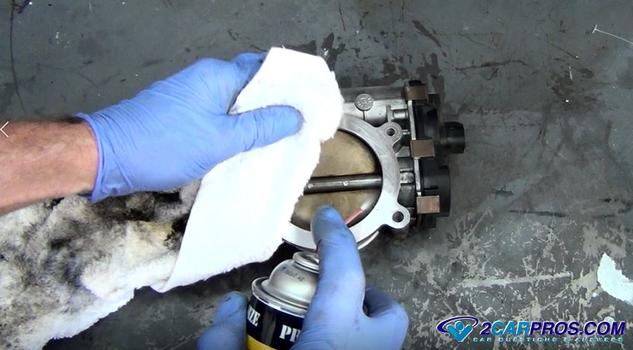The throttle body or throttle actuator as they are called on newer cars is used to meter the engine air intake thus controlling the engine RPM and power output via the gas pedal. The throttle actuator is a normal service item, each manufacturer has their own design when it comes to the throttle system of an engine, but the principle is similar in each application.
What Goes Wrong?
As the engine operates large volumes of air are processed which leaves behind heavy air deposits that can hinder the actuators operation and deflect air flow in an undesirable manner causing the engine to stall at idle, stumble (hesitate), hard start and go into limp mode. When these deposits called "coking" become severe enough the car's computer will detect a correlation mismatch and reduce the power of the engine as a safety precaution.
Caution!
There are generally three types of throttle actuator.
Cable Operated - This is the most forgiving of actuators and will need no special care other than service.
Gen 1 Electronic - (About 2000 to 2009) To service these actuators you must disconnect the battery to avoid programming issues.
Gen 2 Electronic - (About 2009 to present) These units must be serviced with the wiring connector still connected to the actuator (it can be unbolted) and it cannot be forced open or it will cause programming issues. In the shop and with the key on, one technician will open the throttle actuator by depressing the gas pedal, while an additional technician performs the service.
Where Is It?
The throttle actuator is located at the intake manifold air inlet between the air intake tube and main intake manifold body, on top of the engine toward the front in most cases. Some throttle actuators have engine coolant that runs through the unit to help heat the throttle bore to improve drivability.
What's the cost?
The location of the actuator will determine the cost of the service which is typically about $95.00 to $185.00 US if the job is done at a dealer or shop. Supplies to do the work includes a can of throttle bore cleaner (carburetor cleaner) and a shop towel so for the DIYer, about $15.00 US. If exact times or procedures are needed you can ask our experts to supply you with the information (free), or consult an online resource such as AllData DIY (pay) but this guide and videos will be sufficient in most cases.
Let's Jump In!
Locate the air intake tube and loosen the clamps and mounting bolts to remove
it. (Leave the wiring connected if newer than 2009). Older vehicle's utilize a throttle
cable which must be removed, along with transmission and cruise control cables.

Remove the actuator wiring connector which could have a safety clip that will
need to be removed before the connector can be disconnected if applicable.

Watch the Video!
Please watch this video of the job being done, then continue down the guide to glean additional helpful information.
Some actuators have coolant running through them which will need to be
drained and then refilled
once the job is complete. Disconnect the hoses and continue removing the mounting
nuts. Remove the sealing gasket or "O" ring seal and clean or replace. Use a carburetor
cleaner and a shop towel to clean the intake inlet.

Clean the throttle actuator bore housing and butterfly both the front and rear
sides including the pivot shaft. Looking at the rear of the throttle bore coking
deposits, again this is caused by impurities in the air causing the engine to idle
erratically etc. After re-installing the throttle bore, re-insert and evenly tighten
mounting bolts or nuts and tighten to spec which in this case is 4 foot pounds of
torque. Reinstall vacuum, bypass and breather tube lines while reconnecting the
electrical connectors if applicable. Reconnect throttle cables and reinstall the
air intake boot, clear any codes if necessary. The engine could start a little rough
because of excess cleaning solvents that remain, it should clear up within 15 seconds.

Additional Throttle Actuator Service Videos
Chevrolet Suburban Yukon XL Silverado 6.0L
Dodge Grand Caravan 2001-2010 3.3L V6
Questions?
Our certified technicians are ready to answer throttle actuator service questions for free. We hope you saved money and learned from this guide. We are creating a full set of car repair guides. Please subscribe to our 2CarPros YouTube channel and check back often for new videos which are uploaded regularly.


